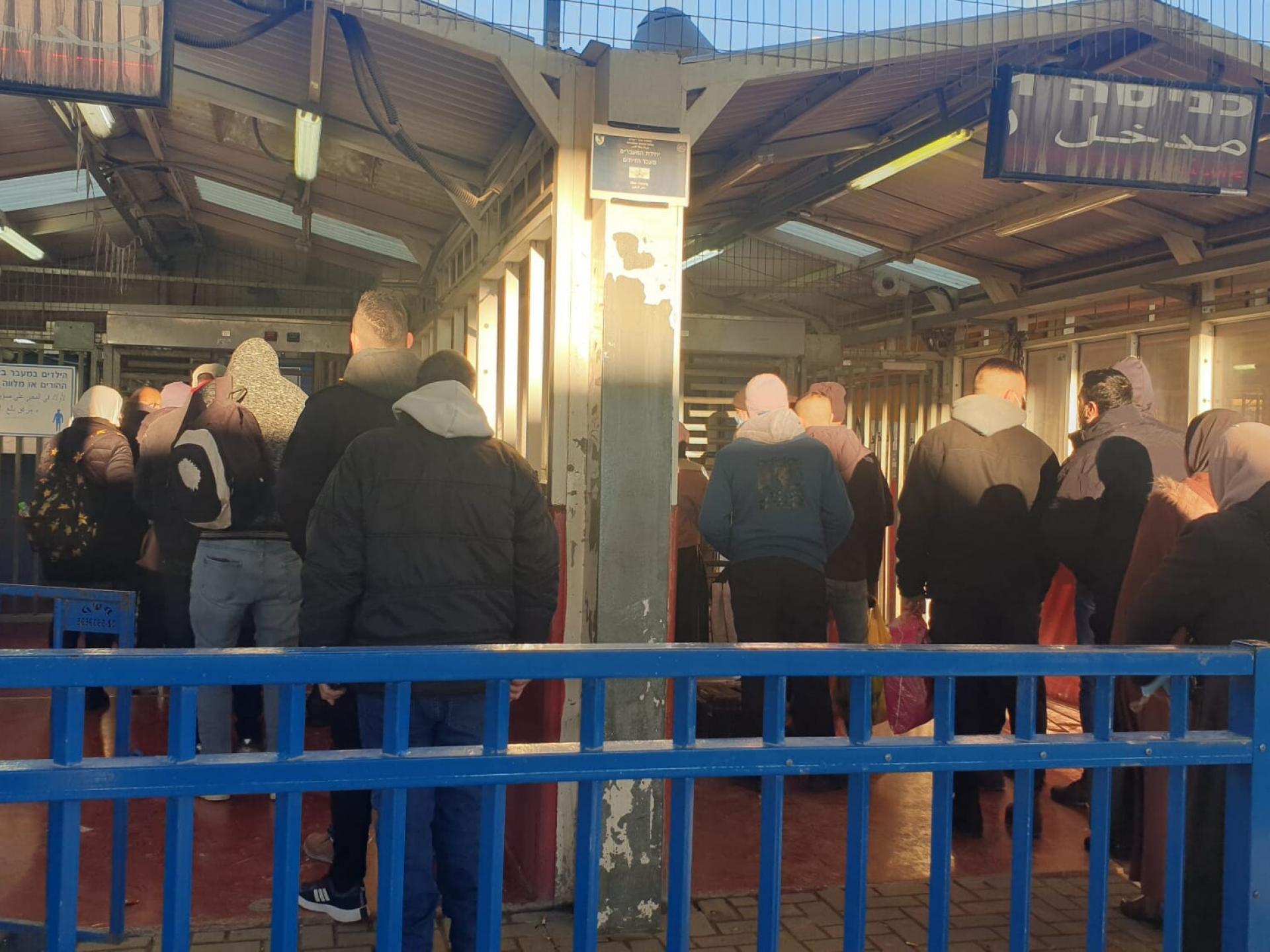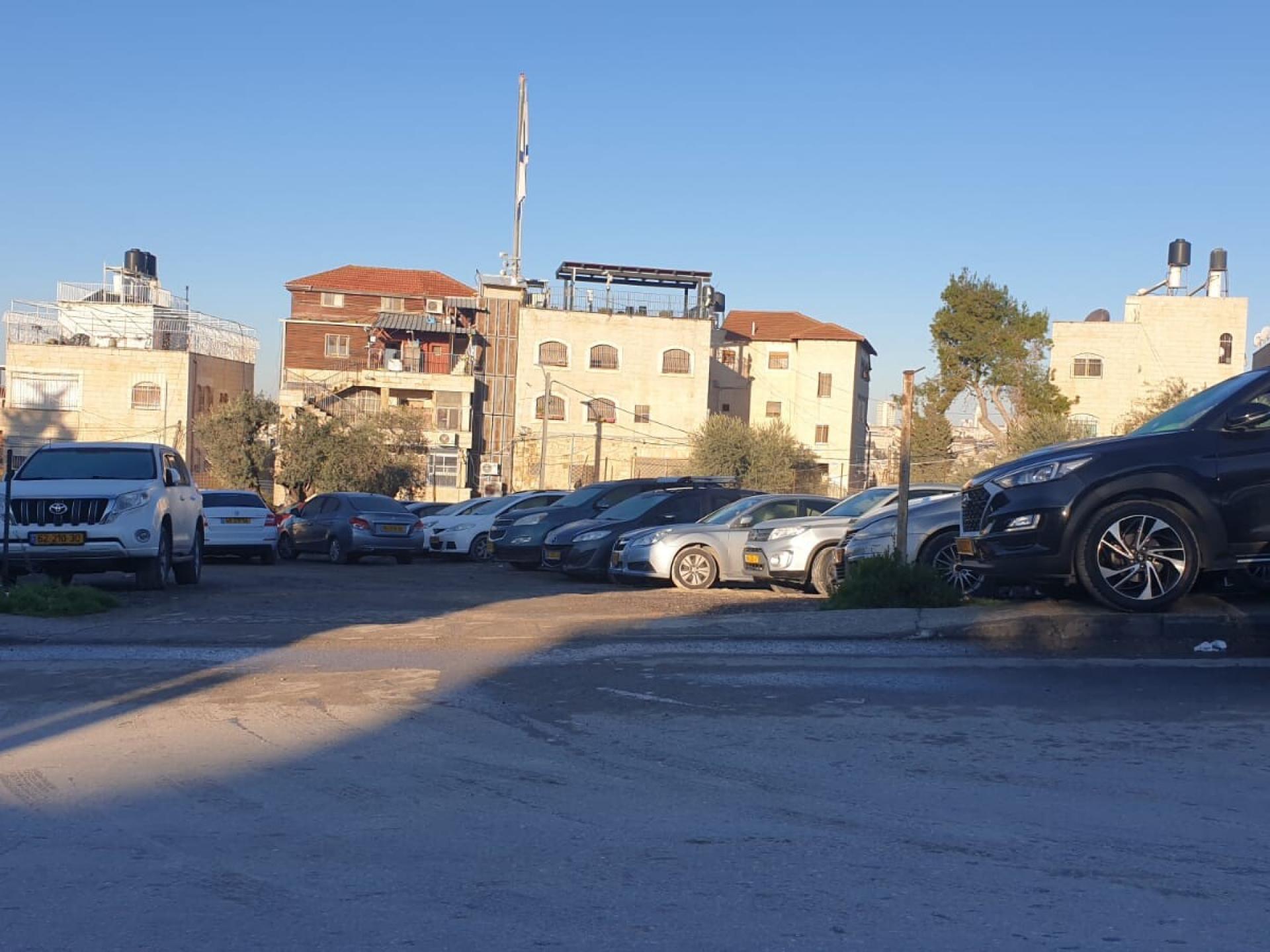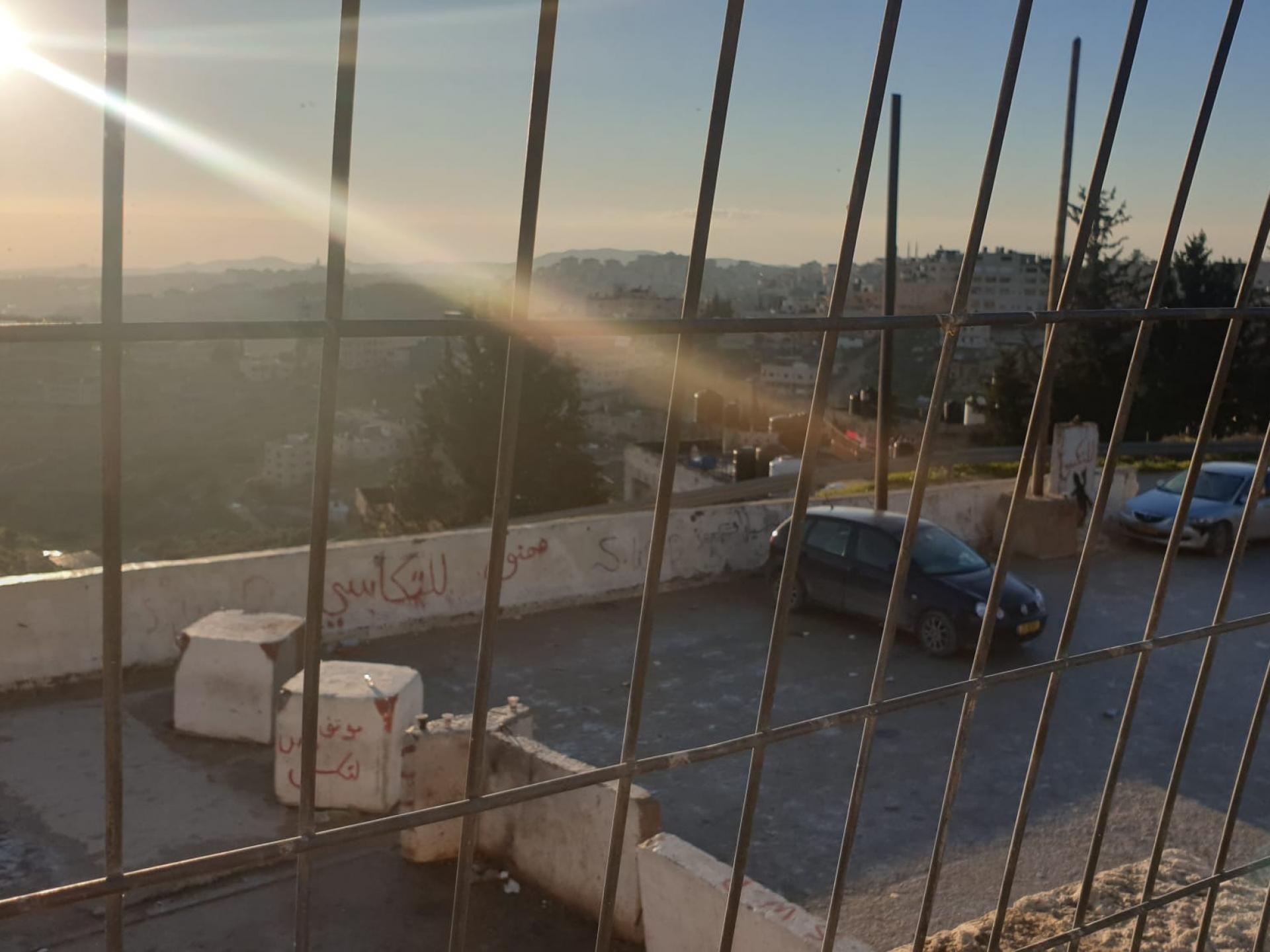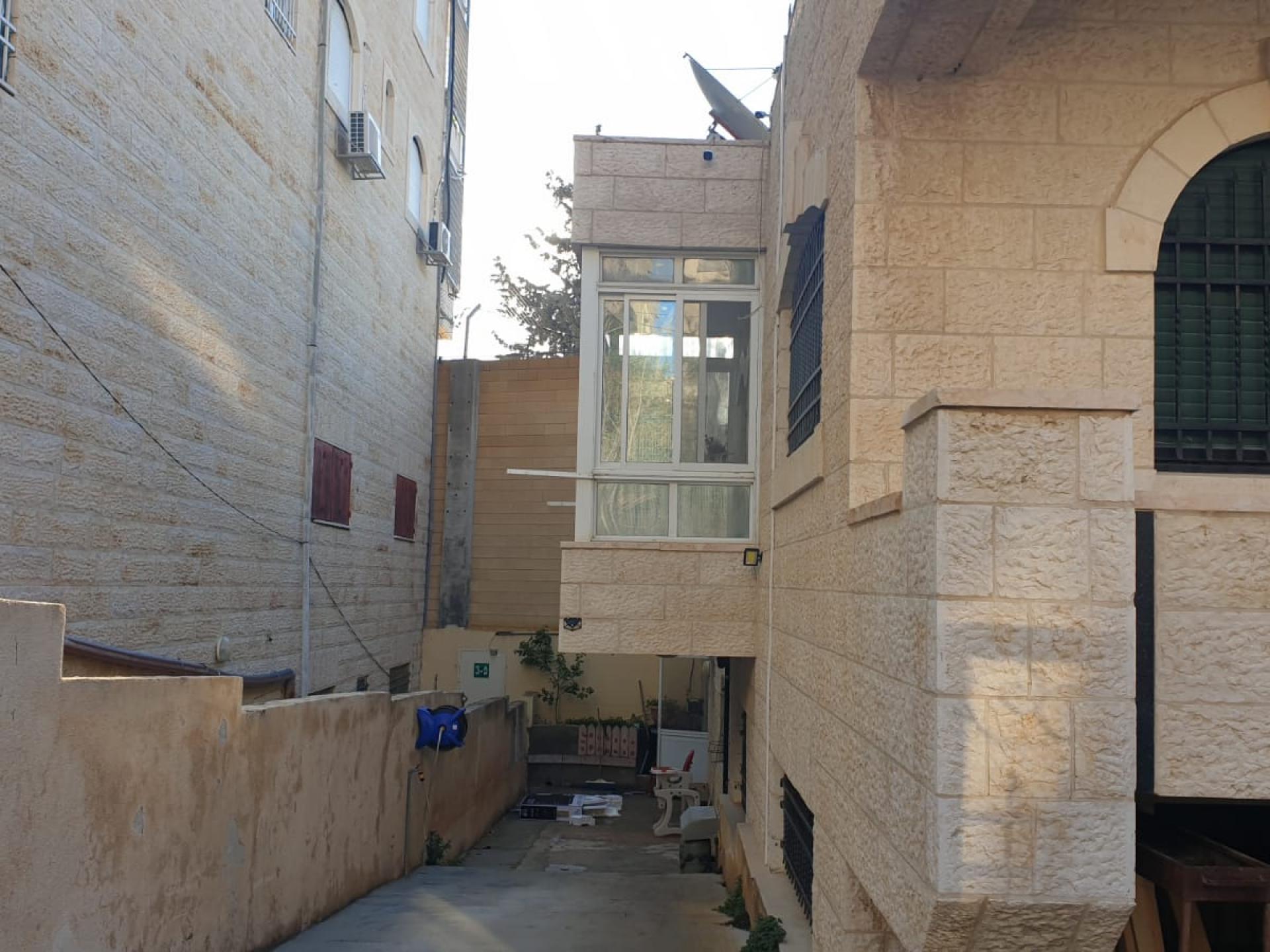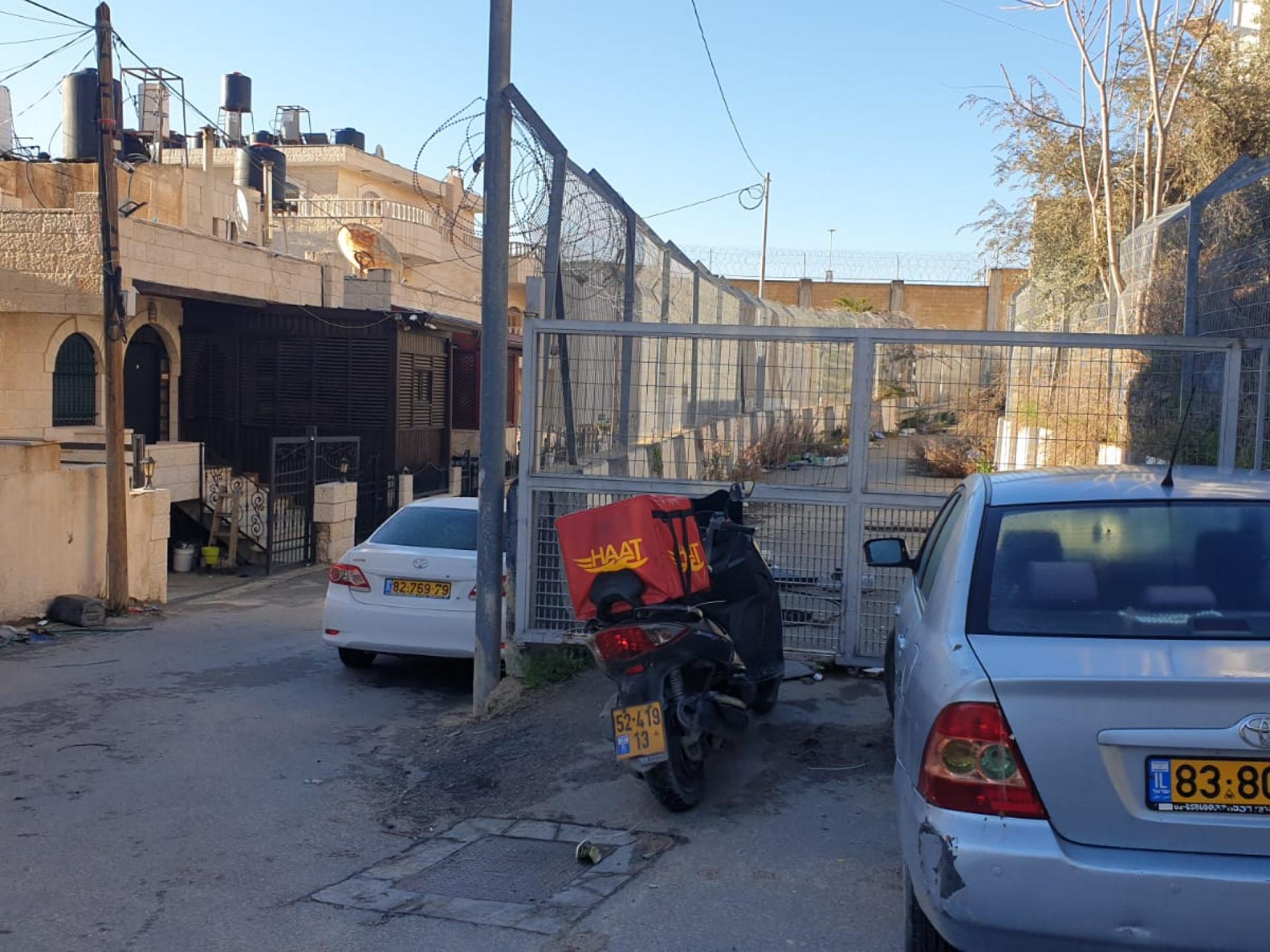Zaitem checkpoint: good to meet young people who are not desperate
This time we decided to split forces on our shift: I took route 443 from Kfar Saba directly to the Olives Checkpoint, Hanna and Netanya drove to the Bethlehem checkpoint with the driver Kamal. We were supposed to meet in Jabal Mukaber with Nabil Bashar, a neighborhood activist, to see the houses about to be demolished to widen the American Road. Residents have been protesting for about a month and a half for not even being allowed to appeal. Eventually we didn’t meet - we planned to do it next time.
6:15 The Olives Checkpoint
I tried to arrive early, but it wasn’t quite early enough. There were still a lot of people passing, those who start out later, but most workers pass here between 4 and 6. Getting to Jerusalem on foot from this remote checkpoint is impossible. From here you have to climb to the summit of a-Tour - hard even for a motor vehicle. But there are buses and private transports.
Outside the checkpoint, I met two Palestinians - one from Jericho, the other from Hebron. They have been working for many years for a contracting company in Har Hotzvim and claim that although they get up early in the morning and return late, their condition is better than those employed by private contractors. The Palestinian side of the checkpoint also did not make it easier for passers-by. Concrete barriers block the road from the parking lot and you have to go up to the checkpoint.
At the checkpoint two positions are open, and the line progresses pretty fast. I converse with a young doctor waiting in line. She’s from the St. John's Eye Hospital in Sheikh Jarrah. It's always fun to meet young people who do not despair. She says she is from Abu Dis, and is not interested in Israel’s decision to separate part of Abu Dis with a wall and annex it to Azariah, even though this decision had much impact on her life and the lives of many people.
Behind the checkpoint booth’s glass, a few young women - military police? police? The “Passage Unit”? At this checkpoint everything is mixed. It is sad again to see how the beautiful faces of young women adorn the various barriers, but do not soften them at all.
A-Tur, Abu Dis, Ras al-Amud
Nabil, the activist from Jabal Mukaber, informs me that he will not be able to meet today until noon - he has an urgent errand. Suggests that we go to the law firm in the east of the city instead - but we want to talk to the people and see with our own eyes what is happening and decide to postpone.
Taking advantage of the freed-up time, I visit other areas, first checking out what is happening with the giant flag settlement at the top of Mount Olives. It's still there, the flag is not raised today, but it has expanded and looks like it now has 3 tall buildings.
In Abu Dis I enter the mythical “Hatch” area, a trouble-laden breach used when the wall was built. Even after the wall’s completion, the Italian monastery bordering it continued to operate a much sought-after kindergarten. With pressure from the Vatican, they opened a miniature door for the children living beyond the wall, and the kindergarten nun received them there from the parents. Of course, they also built a gloriously fortified checkpoint nearby - and then… shut the opening for good. The teachers had to pick up the children from the remote olive checkpoint and return them at the end of the day. After a year, the kindergarten closed.
What is left behind is the Cottages neighborhood that has fought for years in the courts for its inclusion in Jerusalem. The residents won - then a wall was built next to their houses’ windows, and on the other side their access road was blocked with a safety road, so getting home by car and parking it became extremely difficult..
And finally - I also passed at Ras al-Amud on the settlement of Ma'aleh HaZeitim, which expanded across the road. A father and child were waiting for a ride. All at the expense of the state.

